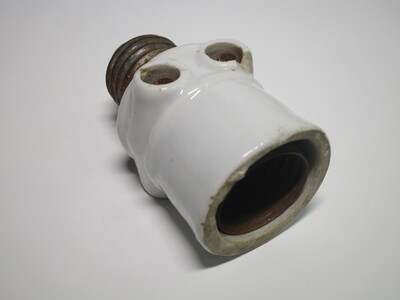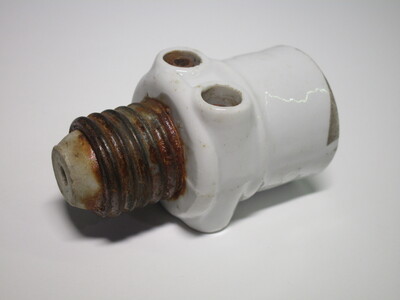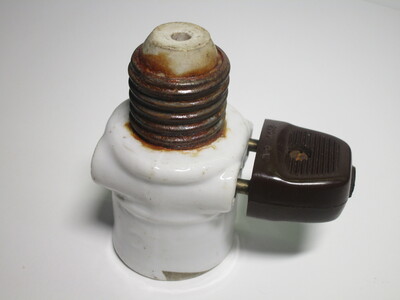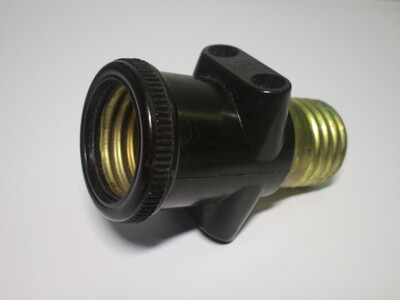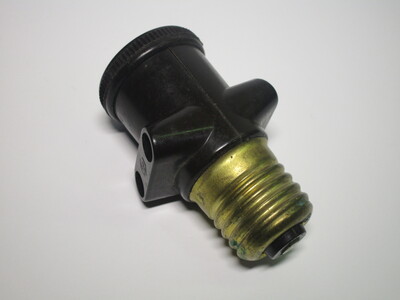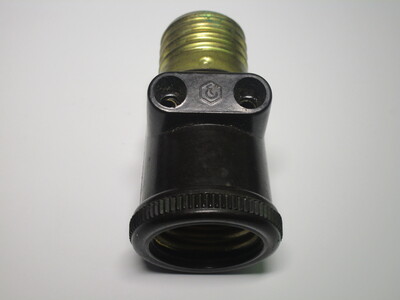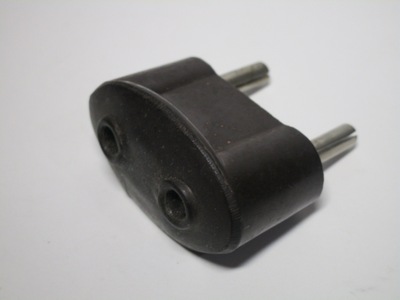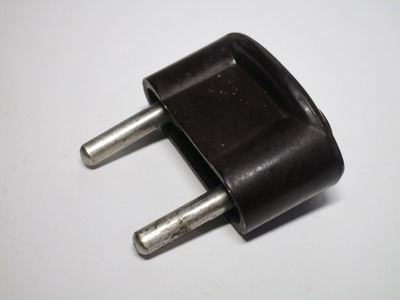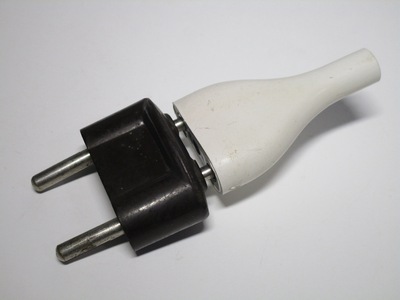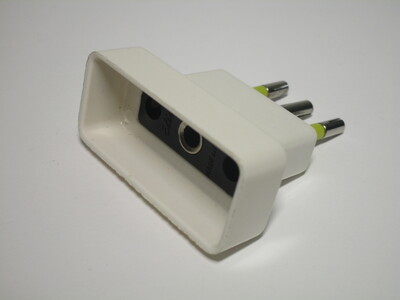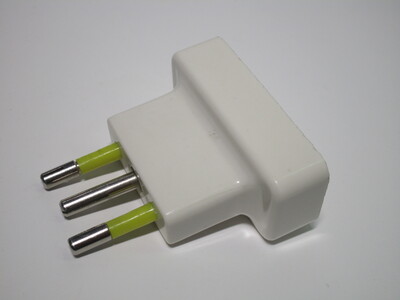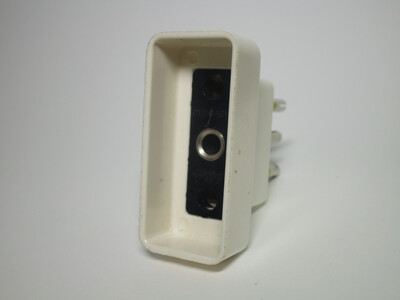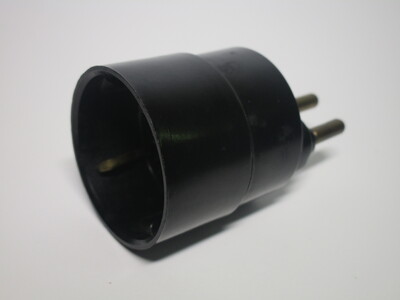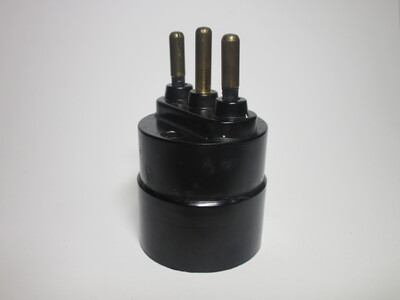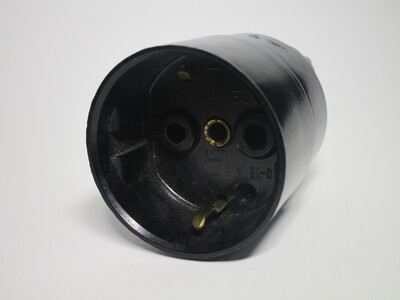Vintage Italian adaptors
As with all other countries, adaptors of various types were and are still common in Italy. The two incompatible plug standards, however, meant that they were significantly more widespread than in the rest of Europe, and multiple designs of them were available.
Lamp socket adaptors
As electricity was initially only used for lighting, houses were at first wired purely with light fixtures and few power sockets, which presented a problem once appliances started becoming commonplace. Adaptors like these solved this issue, by allowing standard household plugs to be connected to a lamp socket. Because of this, in Italy they were called rubacorrente (current stealer).
The examples shown here are clearly from different eras, one being made out of ceramic and the other out of bakelite, but they're functionally identical: they screw into an Edison socket, with a pass-through for a lightbulb to still be used, and feature two European 2-pin outlets to use for appliances.
16A to 10A socket converter
Rating: unknown
This simple non-earthed adaptor is one of the many styles available back in the day to convert between the two types of plug. It's quite simple, and allows a 10A plug to be used with a "large" type of socket.
10A to 16A socket converter
Rating: 10A 250V
This newer adaptor, manufactured by Elios, lets 16A plugs be connected to a 10A power socket. There are several differences from the older model shown previously: it's recent enough that the pins have protective sleeving over them to prevent touching them by accident while inserting or removing it, and thus receiving an electric shock.
The adaptor is also earthed, while the socket part (which unfortunately doesn't have shutters) has a recess which would be helpful on older plugs without sleeved pins - though this also means that some larger ones cannot be used with it.
Early Schuko adaptor
Rating: 10-15A 250V
While Schuko adaptors are a common sight nowadays, this one is from before the age where they became common, and is thus rather interesting. At this time, appliances would have still come - or have been fitted with - standard 10 or 16A Italian plugs, and thus Schuko ones would have only been found on imported appliances. There was thus not yet a need for most people to have these adaptors at home.
This model is old enough to be made out of a bakelite-style material; unsurprisingly, it doesn't have any safety shutters or sleeving on the pins. A slightly odd feature for Italy is the longer earth pin, which would ensure that it'd always make connection before the line and neutral pins.
